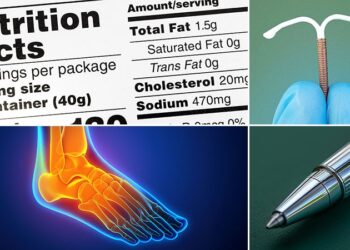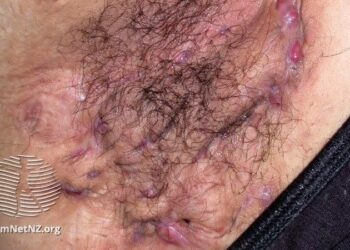LOS ANGELES — Survival outcomes favored mechanical valves for isolated surgical aortic valve replacement (SAVR) for people until age 60, after which a tissue valve may start to have an advantage, according to a large registry analysis.
Using the STS Adult Cardiac Surgery Database, researchers found that comparisons of adjusted mortality rates between mechanical and bioprosthetic valves seemed to hinge on age:
- Age 40-49: adjusted (aHR) 0.69 favoring mechanical valves (95% CI 0.59-0.79)
- Age 50-59: aHR 0.87 favoring mechanical valves (95% CI 0.80-0.94)
- Age 60-69: aHR 0.99 favoring neither (95% CI 0.91-1.08)
- Age 70-75: aHR 1.12 favoring bioprosthetic valves (95% CI 0.97-1.29)
These findings were consistent in sensitivity analyses excluding pure aortic insufficiency, intermediate- or high-risk patients, and discontinued valve types, according to Michael Bowdish, MD, MS, of Cedars-Sinai Medical Center in Los Angeles.
“The choice of a mechanical aortic valve prosthesis is independently associated with a significant survival benefit in patients ages 60 or younger. This data may inform heart teams when considering the optimal prosthesis use for aortic valve management in younger patients,” Bowdish reported at the Society of Thoracic Surgeons (STS) annual meeting. The findings were simultaneously published in the Journal of the American College of Cardiology.
The study, which counted over 100,000 people, “is a wake up call for every surgeon, every cardiologist, our industry partners and our patients. This study confirms information that we’ve already known but have largely ignored,” said session discussant Joseph Dearani, MD, of Mayo Clinic in Rochester, Minnesota.
Bowdish’s team reported that between bioprosthetic valves and mechanical valves, use of the latter dropped from 20% to 10% over the study period, from 2008 to 2019. One of the reasons some are shying away from mechanical valves is the need for life-long anticoagulation therapy.
However, Dearani highlighted that mechanical valves, with their larger effective orifice area, offer a stable hemodynamic profile in the long run, optimizing cardiac remodeling, stabilizing cardiac function, and reducing recurrent myocardial stress. In contrast, bioprosthetic valves can be expected to deteriorate over time, necessitating reintervention or reoperations.
“This strategy of channeling younger patients down the tissue valve pathway is a flawed strategy for lifetime management of cardiovascular care, and now goes against scientific validation. It’s incumbent upon us as a surgical community to continue to perform research and do proactive and larger studies,” Dearani said.
“As an aside, the Ross procedure, which is my preference in this age group, is the only aortic valve replacement procedure that results in a late survival curve equivalent to an age-matched population,” Dearani added. “That procedure is not the topic of this discussion, but it should be at the top of the list for many patients in this [age] bracket, particularly those that do not want to be on anticoagulation.”
Bowdish and colleagues extrapolated upon their findings and highlighted the implications regarding surgery versus transcatheter aortic valve replacement (TAVR).
“Despite clear guidelines to the contrary, treatment trends in the United States indicate that up to 50% of patients under age 65 needing AVR are receiving a TAVR. The survival advantage demonstrated in the current study for mechanical aortic valves in patients 60 years and younger should make us pause as we consider the appropriate treatment option for a ‘young’ patient with aortic valve disease needing valve replacement,” they wrote.
For their study, Bowdish and colleagues drew upon the largest registry available to them, which provided patient-level clinical data including any preoperative comorbidities and procedural characteristics.
From this, they identified patients ages 40-75 undergoing primary isolated bioprosthetic (n=94,125) or mechanical (n=15,717) SAVR for the first time. Excluded were people with endocarditis, emergency/salvage status, shock, ejection fraction ≤25%, and any prior cardiac surgery.
Records were linked to the National Death Index to calculate rates of all-cause mortality.
At baseline, the mechanical valve group tended to be younger (55.7 vs 65.2) and had less aortic stenois (82.4% vs 89.5%), but more moderate and severe aortic regurgitation (39.0% vs 30.5%). The investigators applied statistical adjustments to create relatively balanced groups for comparison.
Even so, the retrospective design of the study left room for residual confounding and potential selection bias. There was also a lack of echocardiographic data available, Bowdish pointed out.
Disclosures
Bowdish disclosed research funding from Renibus Therapeutics outside this study.
Dearani had no disclosures.
Primary Source
Journal of the American College of Cardiology
Source Reference: Bowdish ME, et al “Bioprosthetic vs mechanical aortic valve replacement in patients 40-75 years” J Am Coll Cardiol 2025; DOI: 10.1016/j.jacc.2025.01.013.
Source link : https://www.medpagetoday.com/meetingcoverage/sts/113945
Author :
Publish date : 2025-01-26 21:45:00
Copyright for syndicated content belongs to the linked Source.














